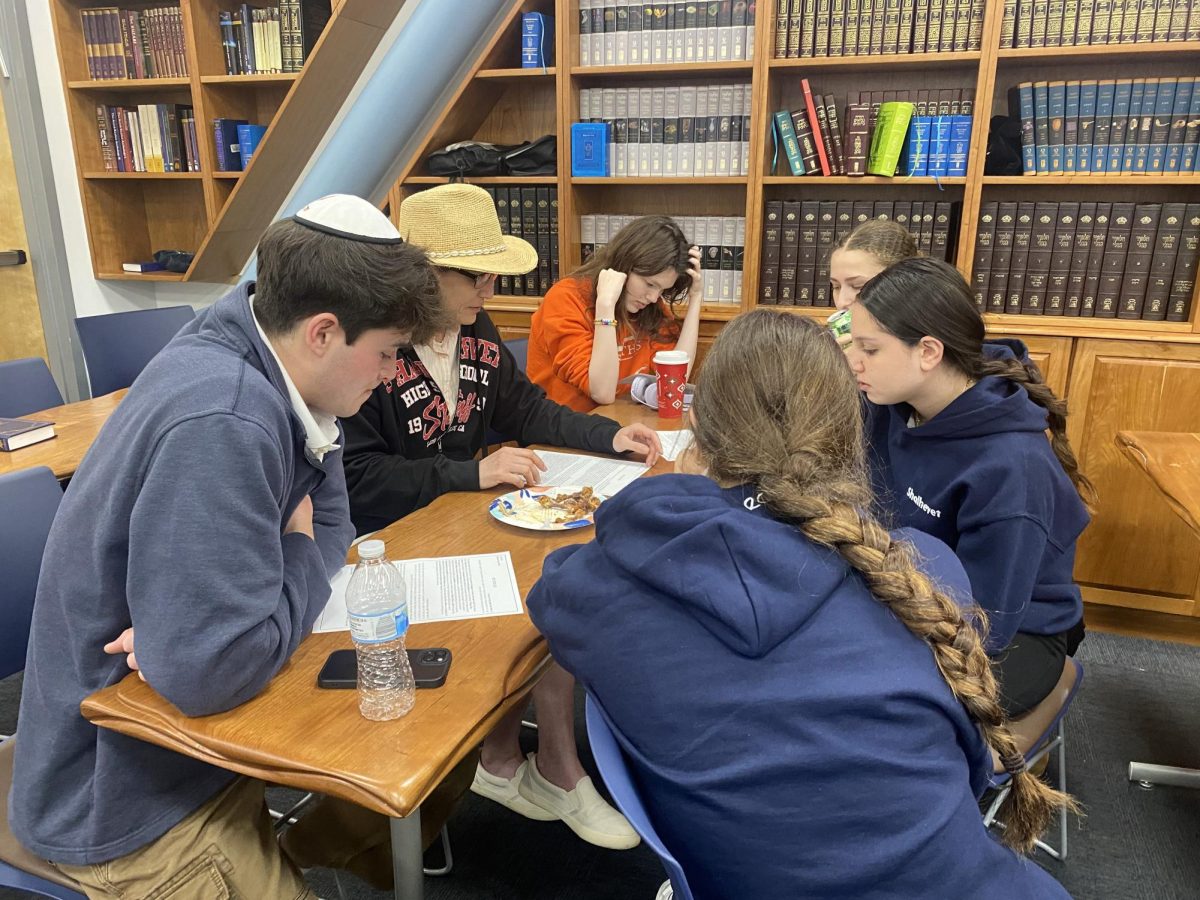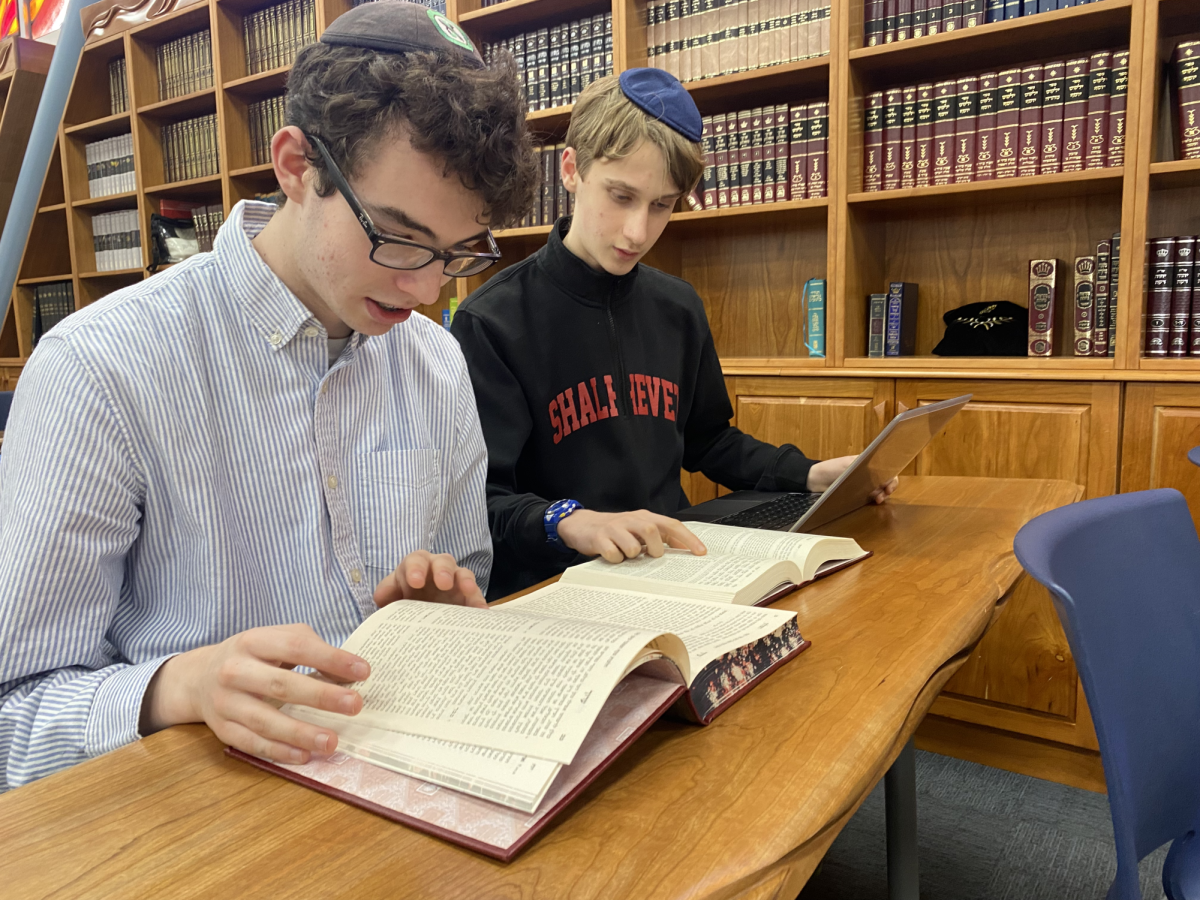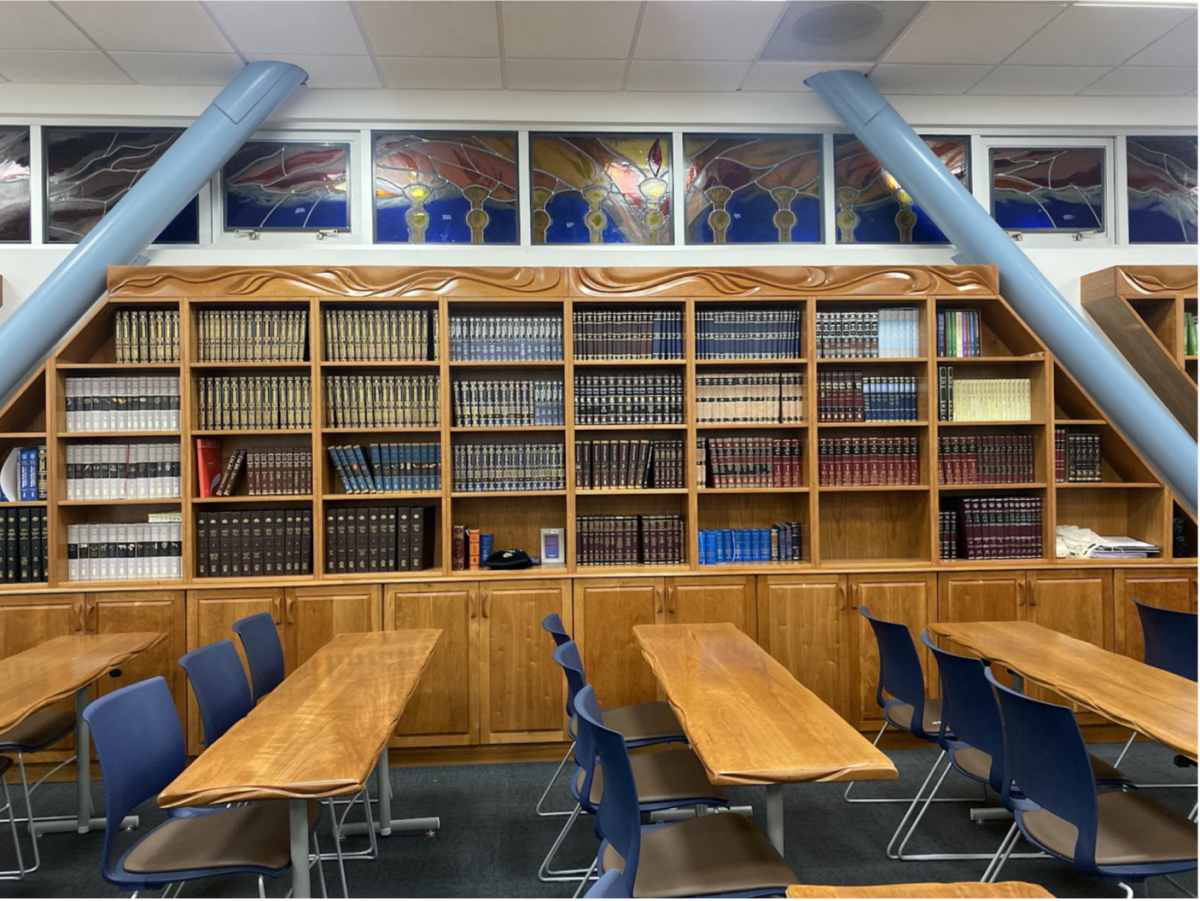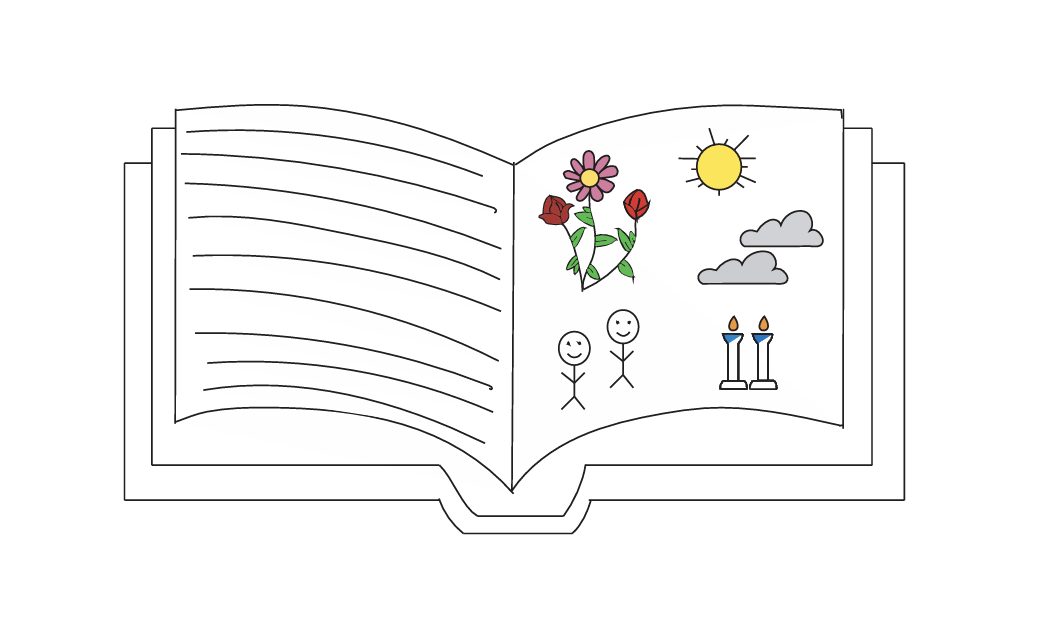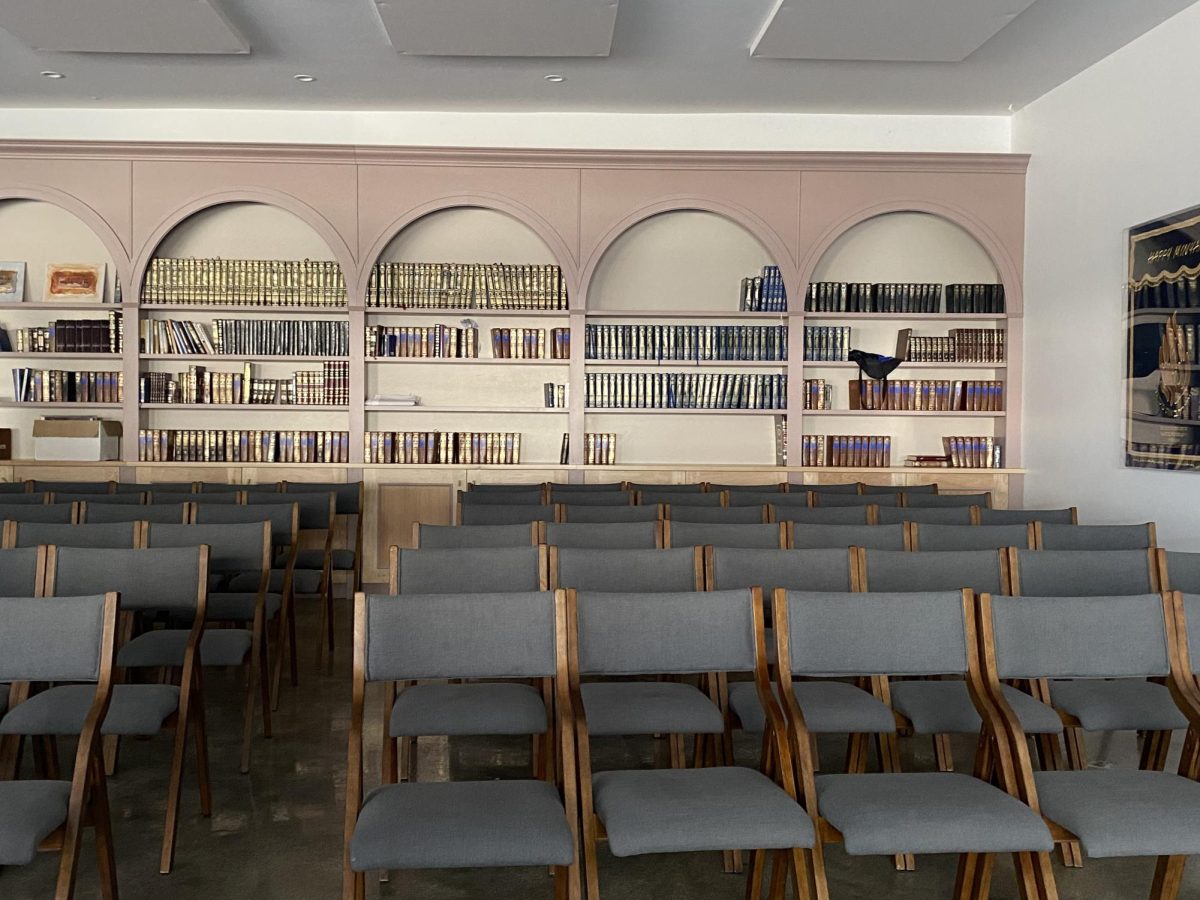The echoey, timeless sound of the shofar ended Shacharit services every day during Elul, and rang loudly in synagogues throughout Los Angeles and the world last week during services for Rosh Hashanah.
At Shalhevet, Mr. Yossie Frankel, ninth-grade physics teacher and Director of Technology, carried out the responsibility of blowing the shofar at both the freshman-sophomore and junior-senior minyanim each morning this year. Along with his daily blowing of the shofar, he offered a two-minute dvar Torah to enhance students’ experience of hearing the sounds.
Mr. Frankel said he’d been blowing the shofar for 20 years, but asked how it feels to do something so ancient and religiously significant, he said that was beside the point.
“I try not to feel,” Mr. Frankel said. “The person who blows the shofar is supposed to be the messenger. It’s not about me, it’s about the kids – that’s what I’m thinking about.”
He did allow that it’s a pretty cool thing to do.
“The sensation is unique, and unless you experienced it, it’s hard to put it into words,” Mr. Frankel said.
For those who hear it, however, the sound of the shofar in Elul and on Rosh Hashanah and Yom Kippur is associated with many feelings and ideas.
Generally made from the horn of a ram — a ram being a male sheep — a shofar produces a sound that wails and slides, downward like a cry or upward like a sliding call to attention. When the Israelites were wandering in the desert, it was used to tell the tribes when to move, and in Bet HaMikdash times it sounded for Rosh Hashanah or for war.
According to the Sages, the mitzvah today is simply to hear it, and the meaning is left to interpretation. Depending on whom you ask, it varies.
“Especially with the liturgy on the High Holy Days, we have a really hard time connecting with the words of the prayers,” said new Judaic studies teacher Rabbi Ari Schwarzberg.
“The blowing of the shofar allows us to connect to our animal-like side… It’s a way to yell towards God, instead of just conversing with God.”
Tradition says that on Rosh Hashanah, God decides each person’s fate for the coming year. In synagogue the focus is on prayer and acknowledging God’s kingship, and then over the 10 days until Yom Kippur – when the shofar will sound for a final time – one may pray, give charity and repent to soften the decree.
An animal-esque scream, Rabbi Schwarzberg said, allows us to dig to the depths of ourselves and express ourselves in the rawest form.
Another common idea is that the shofar’s sound metaphorically wakes us up, reminding us that the day of awe and judgment is approaching. New head of school Rabbi Ari Segal, a seasoned shofar-blower, referred to the shofar as a “proverbial alarm clock,” a way to prepare for Rosh Hashanah and begin to reflect on ourselves.
Mr. Tuli Skaist, another new Judaic studies teacher, compared the alarm aspect of the shofar with the sirens in Israel that are sounded on holidays such as Yom Hashoah and Yom Hazikaron. Like Rosh Hashanah, those days too are a time to respect the sound and reflect, he said.
“It’s a time where people get to reflect in certain ways,” said Mr. Skaist. “Obviously there are a lot of interpretations of the shofar, but I always focused on this sound that gave me the opportunity to reflect.”
Rabbi Leubitz agreed, saying that the sound of the shofar “sets the atmosphere as a time for reflecting on ourselves.” He also emphasized the point that we specifically use a shofar—not a trumpet or other manufactured instrument.
“The fact that it’s a ram also makes a difference, in that it’s simple, it’s not ostentatious,” Rabbi Leubitz said. “It’s also not just a horn sound. There’s a wailing, crying sound to it. It evokes the things inside of us which are hard to deal with.”
Students, too, offered different opinions on how hearing the shofar makes them feel.
“It gets me in the mood for Rosh Hashanah, because you don’t hear it any other time of the year,” said sophomore Yan Kligerman. “It makes me happy for the new year.”
Freshman Sigal Spitzer said it helps her to improve.
“When I listen to the shofar, I reflect on my year and think of how I can be a better person in the year to come,” Sigal said.
Most Jewish men and boys get the opportunity to blow the shofar at some time, but not everyone perfects the art. Rabbi Schwarzberg described his blowing as “weak,” and Mr. Skaist also said he has room for improvement.
However, Rabbi Leubitz has had some experience blowing the shofar in Elul, and Rabbi Segal has also done it for the public before.
Rabbi Leubitz said that before doing it for an audience, he prepares by practicing beforehand. If he was doing it for a Youth Group, he would practice for a week, but if it were for the High Holidays, he would practice throughout the month of Elul.
“It’s the environment, context, and holiness that makes the experience spiritual, so it wasn’t as spiritual when practicing,” Rabbi Leubitz said.
Mr. Frankel has been blowing the shofar for 20 years, without preperaring for even one day in advance before blowing in front of a crowd.
“I only need to prepare myself mentally, through something as I like to interpret as Jewish meditation, being in the moment,” he explained.
Perhaps there’s no time of year when Jews are more in the moment than when standing at attention in the synagogue on Rosh Hashanah and Yom Kippur, hearing the shofar’s cry as a standing-room-only crowd stands in complete silence and listens.
That will happen in just two weeks. Rosh Hashanah this year begins Wednesday night, Sept. 28. Yom Kippur is on Shabbat, beginning Friday night Oct. 7.

